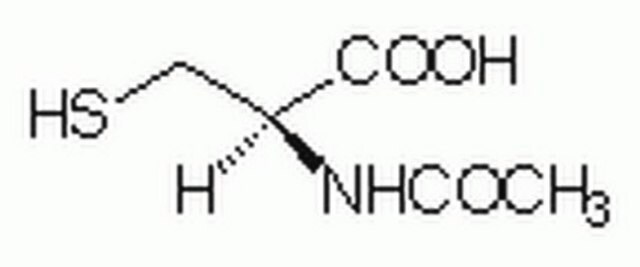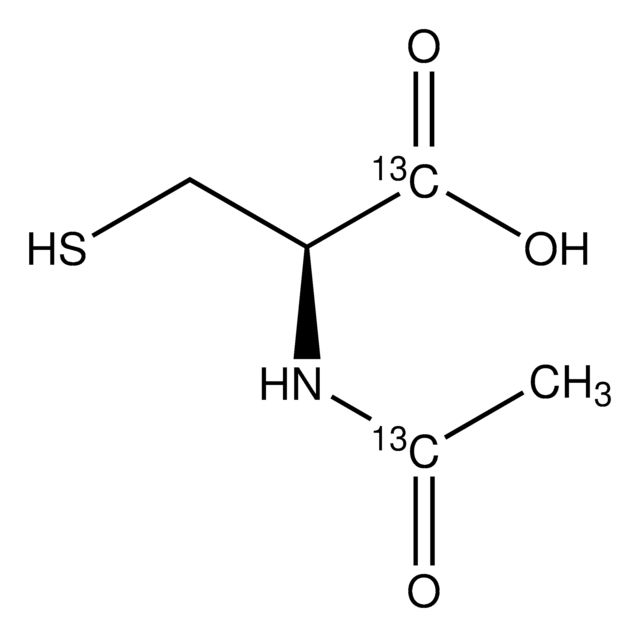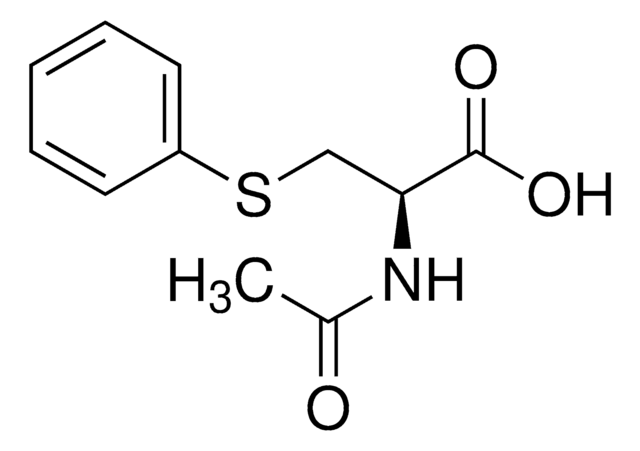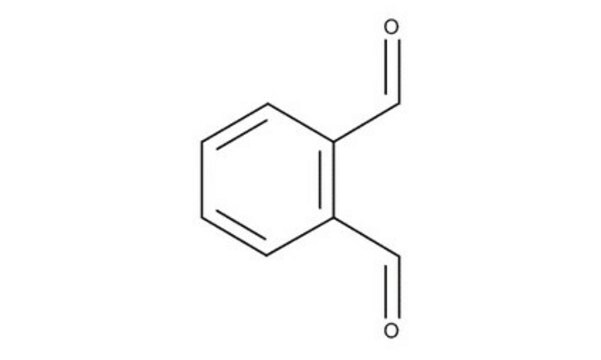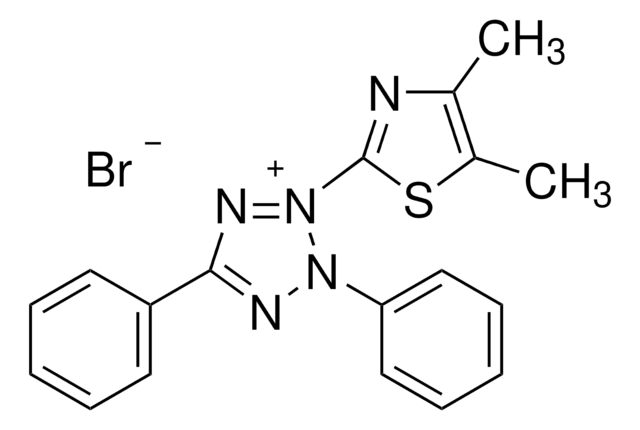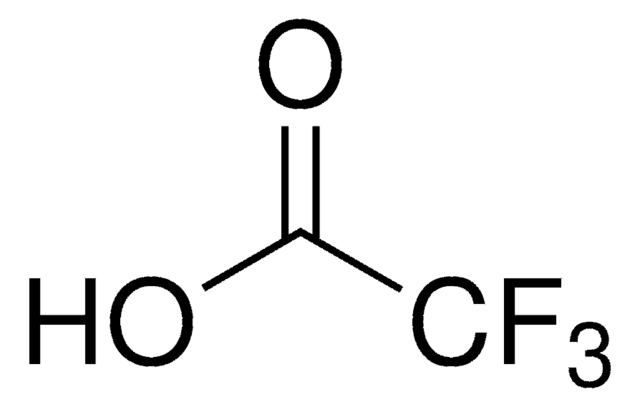1.12422
N-Acetyl-L-Cystein
for biochemistry
Synonym(e):
N-Acetyl-L-Cystein, 2-Acetamido-3-mercaptopropionsäure
About This Item
Empfohlene Produkte
Dampfdruck
<1 hPa ( 20 °C)
Qualitätsniveau
Form
solid
Wirksamkeit
5050 mg/kg LD50, oral (Rat)
pH-Wert
1.5-2.5 (20 °C, 100 g/L in H2O)
mp (Schmelzpunkt)
110.4 °C
Löslichkeit
179.5 g/L
Dichte
1.48 g/cm3 at 20 °C
Schüttdichte
730 kg/m3
Lagertemp.
2-30°C
InChI
1S/C5H9NO3S/c1-3(7)6-4(2-10)5(8)9/h4,10H,2H2,1H3,(H,6,7)(H,8,9)
InChIKey
PWKSKIMOESPYIA-UHFFFAOYSA-N
Anwendung
- Development and characterization of a spray-dried inhalable ternary combination for the treatment of Pseudomonas aeruginosa biofilm infection in cystic fibrosis: This study presents a novel N-Acetyl-L-cysteine application in aerosol form designed to treat Pseudomonas aeruginosa biofilm infections in cystic fibrosis patients, highlighting its potential to improve pulmonary function and reduce bacterial colonization (Alhajj et al., 2024).
- Emetine induces oxidative stress, cell differentiation and NF-κB inhibition, suppressing AML stem/progenitor cells: Research indicates that N-Acetyl-L-cysteine, as part of a combinatory therapy, enhances the oxidative stress response in acute myeloid leukemia, providing a therapeutic strategy for targeting leukemia stem cells (Silva et al., 2024).
- N-acetylcysteine Treatment in Chronic Obstructive Pulmonary Disease (COPD) and Chronic Bronchitis/Pre-COPD: Distinct Meta-analyses: This meta-analysis reveals N-Acetyl-L-cysteine′s effectiveness in reducing exacerbations and improving antioxidant defense in COPD and chronic bronchitis, suggesting a significant therapeutic benefit in respiratory disease management (Papi et al., 2024).
- Tannic acid- and N-acetylcysteine-chitosan-modified magnetic nanoparticles reduce hepatic oxidative stress in prediabetic rats: N-Acetyl-L-cysteine, used in modifying magnetic nanoparticles, shows promising results in reducing oxidative stress and liver damage in a prediabetic rat model, underscoring its potential in preventive therapies (Świętek et al., 2024).
- Phenylarsine oxide induced corneal injury involves oxidative stress mediated unfolded protein response and ferroptotic cell death: Amelioration by NAC: This research outlines N-Acetyl-L-cysteine′s role in mitigating oxidative stress and ferroptosis in corneal cells, providing insights into its protective effects against chemical-induced ocular damage (Kandhari et al., 2023).
Hinweis zur Analyse
Identität (IR-Spektrum): entspricht
Aussehen: weißes bis fast weißes Kristallpulver oder farblose Kristalle
Aussehen der Lösung (1 mol/l, Wasser): klar und farblos
Spez. Drehung(α 20/D, 50 g/l, Puffer pH 7,0): +21,0 bis +27,0
Schwermetalle (als Pb): ≤ 0,001 %
NH₄ (Ammonium): ≤ 0,01 %
L-Cystein (HPLC): ≤ 0,02 %
Andere Ninhydrin-positive Substanzen: ≤ 0,1 %
Signalwort
Warning
H-Sätze
Gefahreneinstufungen
Eye Irrit. 2
Lagerklassenschlüssel
13 - Non Combustible Solids
WGK
WGK 2
Flammpunkt (°F)
Not applicable
Flammpunkt (°C)
Not applicable
Analysenzertifikate (COA)
Suchen Sie nach Analysenzertifikate (COA), indem Sie die Lot-/Chargennummer des Produkts eingeben. Lot- und Chargennummern sind auf dem Produktetikett hinter den Wörtern ‘Lot’ oder ‘Batch’ (Lot oder Charge) zu finden.
Besitzen Sie dieses Produkt bereits?
In der Dokumentenbibliothek finden Sie die Dokumentation zu den Produkten, die Sie kürzlich erworben haben.
Kunden haben sich ebenfalls angesehen
Unser Team von Wissenschaftlern verfügt über Erfahrung in allen Forschungsbereichen einschließlich Life Science, Materialwissenschaften, chemischer Synthese, Chromatographie, Analytik und vielen mehr..
Setzen Sie sich mit dem technischen Dienst in Verbindung.
